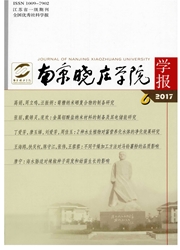

 中文摘要:
中文摘要:
以秦巴山区11县为研究区域,运用GIS技术探讨贫困空间分布格局及演变特征,并对其影响因素进行定量分析。结果表明,秦巴山区贫困村的空间集聚特征较为明显,呈现"大分散、小集中"的格局;与2004年相比,2014年贫困村的空间集聚规模较小,集聚中心数量较多;库区是贫困村的主要集聚地,随着时间推移贫困村的分布呈现远离库区和向乡镇中心附近集聚的趋势。在影响因素分析上,泊松回归的结果表明,自然地理特征、地理区位特征、公共服务设施的可达性和政策因素均对贫困村区位具有显著影响。但随时间推移,贫困村分布的具体影响因素呈现一些新的变化,同一因素的影响大小和影响方向也存在着显著差异。
 英文摘要:
英文摘要:
With the strategic adjustment of rural poverty reduction policy, poverty village is becoming the important spatial object of the rural poverty reduction. In the 11 counties of Qinba mountains as the study area, this paper applies GIS technology to investigate the pattern and evolution characteristics of spatial distribution, and analyzes quantitatively influencing factors. The results shows that poverty villages are spatial agglomeration in the Qinba mountains,and present the pattern of "big scattered, small concentration". Compared with 2004, there is the smaller spatial agglomeration and more agglomeration center in 2014. Reservoir region is the main place to gather, and as time goes on the distribution shifts the area from the reservoir and near to the town. On the analysis of influence factors, poisson regression shows that natural geographical features, geographical location, accessibility of public service and social institutional factors have significant influences on poverty level. But over time, the role of specific factors present some new changes, and the same factor presents significant differences.
 同期刊论文项目
同期刊论文项目
 同项目期刊论文
同项目期刊论文
 期刊信息
期刊信息
